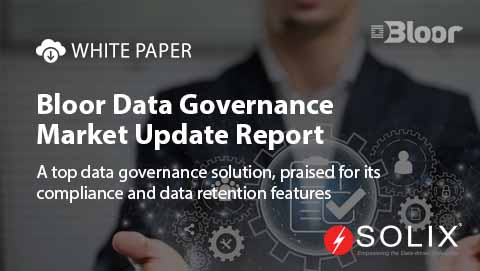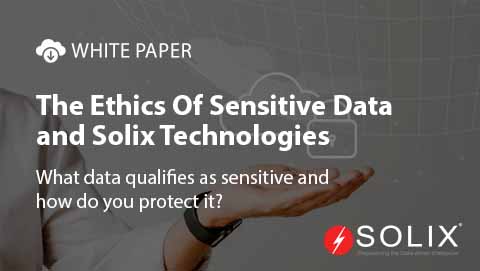Metadata Repository Architecture
When embarking on the journey of data management, one of the most pressing questions that users ask is, What is metadata repository architecture and why is it important Simply put, metadata repository architecture provides a structured framework to store, manage, and use metadata effectively. This architecture is crucial as it helps to ensure that data remains organized, accessible, and useful across various applications and systems.
In todays increasingly data-driven world, businesses are driven to make informed decisions based on data analytics. However, without a robust metadata repository architecture, organizations can easily become overwhelmed with poorly organized information that hinders efficiency. Thats where a well-thought-out architecture can change the game for businesses. Lets dive deeper into what this architecture really means and how it can make a significant difference.
Understanding Metadata Repository Architecture
Metadata repository architecture acts as the backbone of any comprehensive data management strategy. It enables enterprises to classify, store, and retrieve various types of metadata, which includes information about data sources, structures, and relationships. Think of it as a library where data is cataloged in a way that makes it easy to find, understand, and utilize.
In my experience, establishing a strong metadata repository architecture has profound implications for data governance and quality. By ensuring that all metadata is stored in a centralized repository, organizations can streamline their data processing tasks. This leads to better collaboration, accurate reporting, and enhanced compliance with regulatory requirements.
The Components of a Robust Metadata Repository Architecture
A well-rounded metadata repository architecture typically encompasses several key components, including
1. Data models and schemas These provide a framework for defining the data structure and the relationships between different data elements. Understanding your data models can help in the effective retrieval of information.
2. Metadata standards Establishing consistent metadata standards is crucial for ensuring the metadata is understandable and usable. This often involves frameworks like Dublin Core or ISO standards that facilitate shared understanding across different teams.
3. Integration capabilities Your architecture must work seamlessly with various data sources, applications, and analytics tools. Integration capabilities ensure that metadata can be easily updated as new data is generated.
4. User-friendly interfaces To encourage the adoption of the metadata repository, it should offer easy-to-navigate user interfaces. This enhances usability and allows teams to access the information they need without hurdles.
By including these elements in your metadata repository architecture, you create a sustainable, scalable solution that grows alongside your business needs.
Real-World Applications and Benefits
Let me share a practical scenario from my time working in a data-intensive environment. We once faced significant challenges around data provenance and validation in our project due to the silos within our metadata management processes. After integrating a robust metadata repository architecture, we not only improved our ability to trace data lineage but also enhanced our overall data governance. This led to a significant reduction in errors and an increase in overall operational efficiency.
The primary benefits of a strong metadata repository architecture include
1. Enhanced data discovery A well-organized repository significantly cuts down the time it takes to locate relevant datasets.
2. Improved data quality With clearer definitions and relationships, teams can ensure high-quality data is consistently used across projects.
3. Better compliance Regulatory bodies often require detailed documentation of data management practices. A robust metadata architecture simplifies compliance reporting.
How Solix Can Enhance Your Metadata Repository Architecture
At this point, you might be wondering, How does this connect to solutions offered by Solix Well, Solix specializes in delivering data management solutions that include a comprehensive framework for metadata repository architecture.
One remarkable product from Solix that can help streamline your metadata management process is the Solix Cloud Data Management. This solution aids organizations in automating data management tasks, ensuring seamless integration across your architecture. For more information, you can check the Solix Cloud Data Management page.
Actionable Recommendations
Now, lets get to the actionable part! If youre looking to implement or improve your metadata repository architecture, here are some practical steps to consider
1. Assess your current situation Take an inventory of how metadata is currently managed within your organization. Identifying gaps can help guide your architecture development.
2. Involve key stakeholders Engage with various teamsdata engineers, analysts, compliance officersto ensure the architecture meets the diverse needs of the organization.
3. Choose the right tools Invest in software and solutions that can seamlessly integrate with your existing systems, paying special attention to user-friendliness and accessibility.
4. Regularly review and update A metadata repository architecture should evolve with your data needs. Schedule regular reviews to ensure it remains relevant and effective.
If you need further assistance, dont hesitate to call Solix at 1.888.GO.SOLIX or reach out through the contact pageThey are equipped to help you design and implement a robust metadata repository architecture tailored to your specific needs.
Wrap-Up
Investing in a strong metadata repository architecture is not just a good idea; its essential for any data-driven organization looking to effectively manage and leverage its data assets. By following the steps outlined above and partnering with experts like Solix, you can create a framework that supports organizational growth and efficiency. Remember, the goal is not just to manage data, but to transform it into a valuable asset.
About the Author
Hi, Im Sophie! I have a passion for understanding metadata repository architecture and its impacts on organizational efficiency. With over five years in data management, Ive seen firsthand how a well-structured metadata framework can empower teams and enhance decision-making processes.
Disclaimer
The views expressed in this blog post are my own and do not necessarily represent the official position of Solix.
Sign up now on the right for a chance to WIN $100 today! Our giveaway ends soon‚ dont miss out! Limited time offer! Enter on right to claim your $100 reward before its too late!
-

-

-
 On-Demand Webinar
On-Demand WebinarThe Power of Less: How Data Minimization Drives Data Privacy Compliance
Watch On-Demand Webinar
